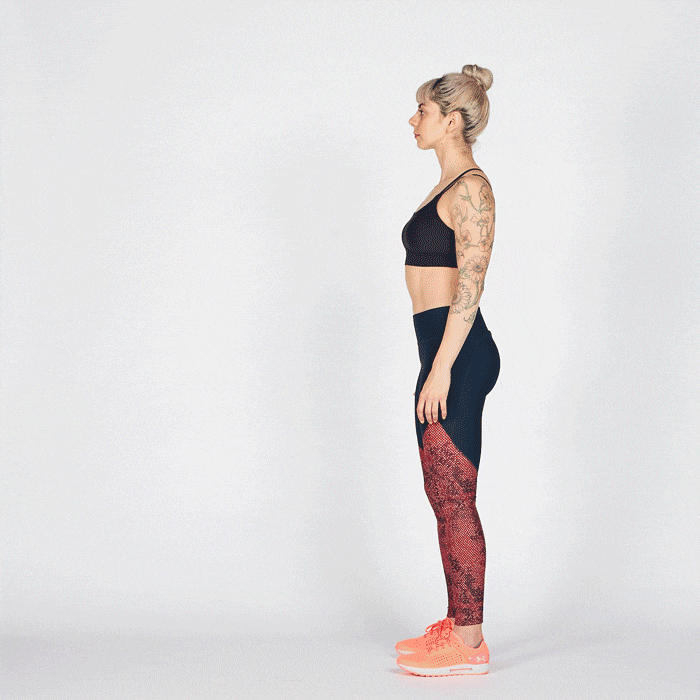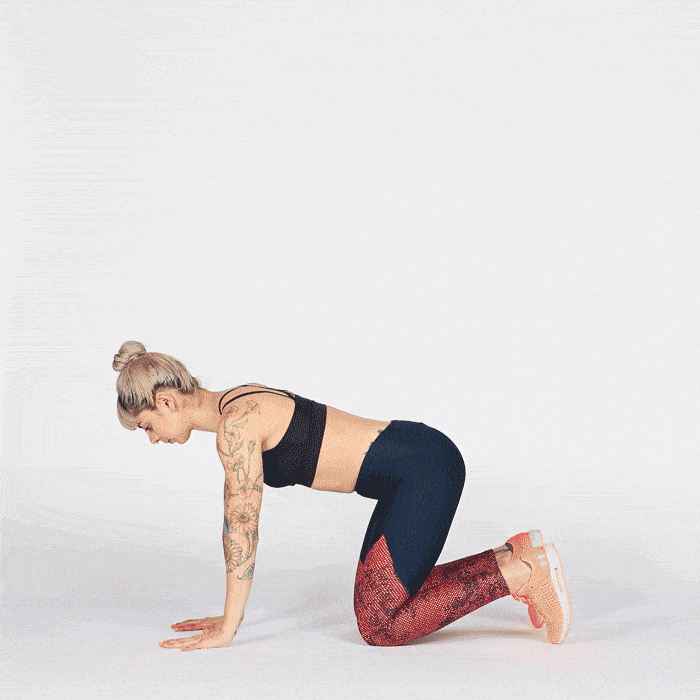Stretching isn’t only a post-workout thing. Certain kinds of stretches can be performed anytime of day to help alleviate tight spots caused by a workout, poor posture, sitting at your desk or everyday activities.
“Regular stretching, utilizing a variety of flexibility training techniques, including dynamic, range-of-motion movements, is vital to our overall health and well-being,” explains Jessica Matthews, an award-winning fitness instructor and author of “Stretching to Stay Young.” “Restrictions in range of motion caused by tight, stiff muscles not only negatively affect how you move when exercising and when going about everyday activities, it also affects how you feel physically and mentally.”
One great thing about stretching is that the benefits are almost immediate, she adds. “Short-term benefits of stretching have been documented as quickly as immediately following exercise and also after as little as 7–10 sessions in an intensive program or as short as 3–4 weeks of stretching at least twice per week.”
The stretches below are dynamic stretches, meaning you can do them as part of a warmup or anytime during the day to alleviate tension. They not only mimic movement patterns we perform in everyday life, but they also enhance mobility in the ankles, hips, thoracic spine (upper back) and shoulders — four key areas of the body designed to be mobile — and move your body through the various planes of motion.
READ MORE > 5 STRETCHING MYTHS, BUSTED
“These types of active stretches can help to address movement deficiencies, improve joint range of motion and reduce the risk of developing injuries,” Matthews explains. Perform them at least 2–3 days a week for the most benefit.

HINGE AND REACH

Targets: Shoulders and hips
Why it’s great: Matthews calls this an “ideal warmup move” to do before a variety of everyday tasks and recreational activities.
The move: Stand with your feet hip-width apart and arms relaxed alongside your body, palms facing one another. Keeping a soft bend in the knees and maintaining an elongated spine, hinge at hips, pressing glutes back while outstretching arms forward at shoulder height with palms still facing one another. Thrust hips slightly forward returning to a standing position while simultaneously swinging arms slightly back behind the body. Continue this movement sequence.
Pro tip: Since this is a warmup stretch, it’s important to go through the movements at a slow, controlled tempo to allow your body to gradually prepare for the activity you’ll do after.
LEG SWING

Targets: Hips and hamstrings
Why it’s great: This is another great warmup movement for everyday activities or higher-intensity workouts, such as running, hiking or cycling.
The move: Stand with your feet slightly parted and hands resting on your hips. Shift weight to your left foot, bending the right knee slightly while lifting the right heel. Keeping the right knee softly bent, actively swing the right leg forward and backward, allowing the right knee to naturally flex and extend throughout the movement, maintaining length in the spine. Continue this movement sequence, then switch sides and repeat.
Pro tip: Don’t kick mindlessly. Perform this movement using a controlled, rhythmic tempo.
CAT-COW

Targets: Back, neck and abdominals
Why it’s great: “This dynamic motion exercise helps improve thoracic spine mobility and serves as an ideal movement to functionally prepare the body for activities of everyday life, while also serving as an effective warmup for various sports and leisure activities, like dancing, swimming and cycling,” Matthews says.
The move: Come onto all fours with your wrists below your shoulders and knees below hips, maintaining a neutral, extended spine with toes tucked under. Inhale, softening belly toward the floor and gently arching the back, tilting tailbone and chin toward ceiling. Exhale, gently rounding the spine, drawing the chin toward the chest and untucking toes, placing tops of feet on the floor. Repeat this sequence of movements.
Pro tip: This is a motion exercise as opposed to a passive stretch. Rather than holding in cat or cow, focus on a continuous movement between the two.
FLOOR ANGEL

Targets: Chest and shoulders
Why it’s great: This stretch helps reduce restrictions in the shoulder joint, helping to minimize pain and decrease the likelihood of a shoulder-related injury, Matthews explains.
The move: Lie on your back with your knees bent and feet flat on the floor with your arms bent alongside the body, elbows pinned into sides and palms facing up. Keeping your arms in contact with the floor, inhale to slide arms overhead until your index fingers touch one another. As you exhale, slide your arms back down to the starting position, keeping arms and hands in contact with the floor throughout the movement. Repeat this sequence of movements.
Pro tip: Try to keep your upper arms, forearms and hands in contact with the floor, or as close as possible, throughout the movement and avoid arching the lower back as your arms stretch overhead.
QUADRUPED ROTATION

Targets: Back and chest.
Why it’s great: “This stretch is designed to increase mobility in the thoracic spine, allowing for more efficient and pain-free movement, from reaching across the body to put on a seatbelt to swinging a golf club,” Matthews says.
The move: Come to all fours with knees below hips and wrists below shoulders. Draw left fingertips behind your left ear, keeping your elbow bent and open to the side of the body. Rotate torso to the left, drawing left elbow to point toward ceiling. Reverse the movement, returning torso to starting position parallel with the floor while crossing your left elbow toward your right arm. Continue this movement sequence, then switch sides and repeat.
Pro tip: To minimize any undue pressure on the spine, visualize rotating the entire torso, including the head and neck, as one unit when moving in each direction, twisting from the upper back in a controlled fashion.
SIDE-TO-SIDE STANDING DIAGONAL

Targets: Shoulders, hips and inner thighs.
Why it’s great: “This stretch incorporates lateral movement to improve hip mobility and knee stability with cross-body arm movements to improve shoulder mobility and reduce the likelihood of shoulder pain or rotator cuff injury,” Matthews says.
The move: Stand with feet together and right arm raised toward the ceiling at a 45-degree angle creating a loose fist with your hand. Step your left foot out 1–2 feet to the left, hinging at the hips and bending your left knee to come into a side lunge. At the same time, cross your right arm in front of your body with your elbow bent and hand in front of your left hip, right forearm parallel to belly. Gently push off of your right foot, return to starting position with feet together and right arm raised. Continue this movement sequence, then switch sides and repeat.
Pro tip: Avoid stepping too far out to the side during the lunging portion of this movement and keep the knee of the bent leg tracking in line with the second toe of that foot to avoid undue stress or strain on the knee or hip joint.
FIGURE EIGHT

Targets: Hips, glutes, inner thighs and ankles.
Why it’s great: “This active stretch targets the deep muscles of the hip and serves as a great prep for activities that require quick changes in speed and direction, like tennis and dancing. Additionally, performing dynamic hip circles can help to ease stiffness and pain associated with arthritis,” Matthews says.
The move: Stand facing a wall or the back of a sturdy chair, placing both hands on the surface with your arms fully extended. Shift your weight to the left foot, bending your right knee slightly while lifting your right heel and keeping your toes on floor. With the right knee bent, trace a figure-eight pattern on the floor with the right toes, opening and closing the right hip and knee in a fluid motion. Continue this movement sequence, then switch sides and repeat.
Pro tip: For safety, be sure to perform this movement within your current range of motion and to gradually work toward increasing the size of the circles as it feels comfortable for you. Also complete the stretch in a smooth, fluid manner.




